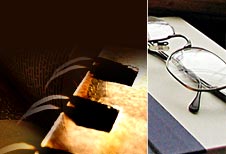„Israelite (Iron Age II) Burial Customs in the Jerusalem Area in the Light of the Biblical and Archeological Evidence”
Scriptura Sacra 5 (2001) 113-128.
Around Jerusalem several cemeteries dating to the Israelite Iron Age II were excavated and each has its own characteristics. The Israelite practice was to place the burial places near the cities, but outside the town walls. The exceptions were the tombs of the kings, which were inside the City of David (1 Kings 2,10; Neh. 3,16). The variety of forms of tombs was caused by heterogeneous population, social hierarchy, and foreign influence. In this paper we describe briefly the Iron Age cemeteries in the Jerusalem area (Village of Silwan, area of St. Etienne`s Monastery, the Hinnom Valley and the Kidron Valley, the Tyropoeon Valley, and other tombs) confronting archeological evidence with biblical data. On the basis of archeological and biblical data we can deduce the most important and common beliefs concerning the death and afterlife of Israelites in this period.
back

